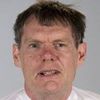The world did not end May 21.
The calculations of the Family Radio prophet Harold Camping that believers would be taken up to heaven that day as an earthquake struck the Earth did not come to pass.
Just like it did not come to pass in the 1840s, when followers of William Miller sold belongings, quit jobs and gathered on mountaintops in anticipation of the Rapture. Or on Sept. 6, 1994, or any of the other earlier dates Camping himself set forth.
But if it seems foolhardy to forecast the date of the apocalypse, predicting the future of religion is not so far-fetched, as some scholars say they have an increasing number of scientific tools to make such projections.
Under at least one scenario, Hispanic Catholics will be the big winners and predominantly white religious groups will lag behind.
Age patterns, plus fertility, immigration and conversion rates project that Hispanic Catholics may nearly double to 18 percent of the U.S. population by 2043, according to an article by Vegard Skirbekk and Anne Goujon of the World Population Program and Eric Kaufmann of the University of London in the Journal for the Scientific Study of Religion.
The three researchers predict the secular population will grow in coming decades before reaching a plateau by the middle of the century. Liberal Protestants, an older demographic with low fertility rates and little expected benefit from immigration, are expected to continue to decline.
These are not predictions to be taken lightly, the researchers state. "Demographic projections are the most certain of any in the social sciences," they say in the journal article.
Not everyone is a believer, however.
Barry Kosmin, a principal investigator of the American Religious Identification Survey, said no one can predict the 2024 election, much less patterns of religious growth and decline 30 years from now.
"It's preposterous to do this kind of thing," said Kosmin. who also is director of the Institute for the Study of Secularism in Society and Culture at Trinity College. "You can't tell what's going to happen."
More Catholics, Muslims, fewer Presbyterians
Despite conversions and a lower fertility rate among white Catholics, the expected growth of Hispanic Catholics could lead to a historic shift in American religion, according to Skirbekk, Goujon and Kaufmann.
In their study largely based on General Social Survey findings, census immigration statistics and Pew data, the researchers state the rise among Hispanics "will power the growth of Catholics as a whole, who will surpass Protestants by mid-century within the nation's youngest age groups."
Even with net losses to secularism and Protestantism, if current rates of fertility, immigration and conversion remain constant, Catholics would outnumber Protestants some time in the second half of the century, the researchers state.
Under the same scenario, aided by immigration and in the case of Muslims higher fertility rates, the percentage of Americans from non-Christian faiths would almost double, from 6 percent to 11 percent.
Most predominantly white groups are expected to decline as a percentage of the population. Baring unforeseen shifts, the researchers said, even conservative Protestants are expected to decline overall as the white share of the population falls.
The secular population, relatively young and a winner in the switching wars, is expected to grow in the coming years, but eventually to reach a plateau due to low fertility and a modest immigration rate.
In his new book, "Shall the Religious Inherit the Earth: Demography and Politics in the Twenty-First Century," Kaufmann refers to demography as "the soft underbelly of secularism."
"Seculars would have to maintain a high rate of defection" to hold on to their percentage of the U.S. population," Kaufmann, a professor of politics at Birkbeck College, University of London, said in an interview. "Having to run to stand still is kind of the lesson for seculars."
A lot can change
Skirbekk, Goujon and Kaufmann note a lot can change to alter their projections.
Immigration laws can be tightened, or patterns can shift so that significant immigration begins to arrive from more Pentecostalist-source countries such as Guatemala or parts of sub-Saharan Africa. Fertility rates can fluctuate, the researchers note.
But demographic projections can still be of great value, particularly since the characteristics of future populations are "heavily constrained" by the ages of current populations and the main source of religious recruits is the children of communicants, the researchers state.
Others, however, say it is foolhardy to predict future events.
Kosmin notes that even in recent years, few predicted such trends as the growth of nondenominational churches. Nor would one have predicted the clergy sex scandal that engulfed the Catholic church.
Similarly, one cannot predict the rate of religious switching decades away. Just because a child has an Hispanic Catholic father does not mean a grandchild will be Catholic, he said.
"It's a clever statistical exercise," he said of demographic projections, but not one likely to bear fruit.
The final reckoning will not take place until the middle of the century, when the projections can be judged against the actual numbers.
There is one consolation. Whatever happens, at least it's not the end of the world.
David Briggs writes the Ahead of the Trend column for the Association of Religion Data Archives.
